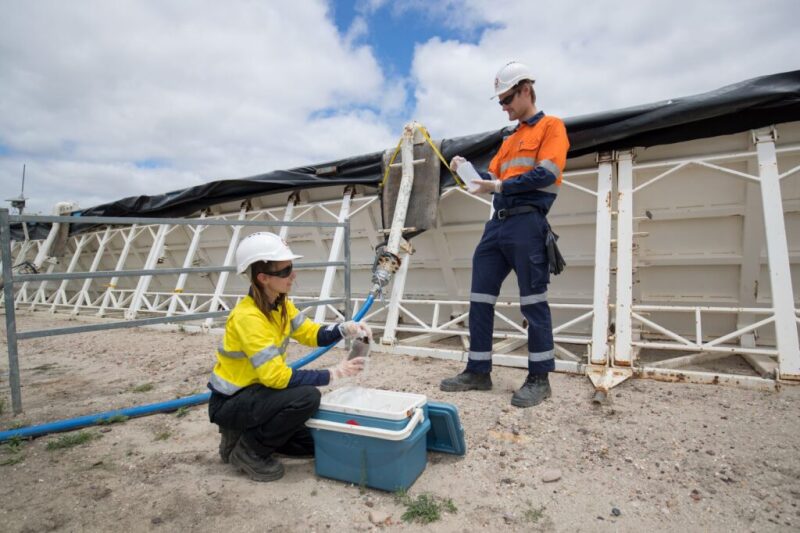A comprehensive 3-year scientific study into the air, water and soil impacts of hydraulic fracturing in Queensland coal seams has found few to no impacts on air quality, soils, groundwater, and waterways.
The study also found current water treatment technology used for treating water produced from coal seam gas wells is effective in removing hydraulic fracturing chemicals and naturally occurring (geogenic) chemicals to within relevant water quality guidelines.
Research objectives for “Air, Water and Soil Impacts of Hydraulic Fracturing in the Surat Basin, Queensland,” conducted by the CSIRO’s Gas Industry Social and Environmental Research Alliance (GISERA), were developed in response to community concerns about the potential for chemicals used in hydraulic fracturing operations to affect air quality, soils, and water resources.
The study analyzed air, water, and soil samples taken before, during, and up to 6 months after hydraulic fracturing operations at six coal seam gas wells in the Surat Basin in Queensland.
GISERA Director Damian Barrett said that the research was an Australian first and provided unique insights into the impacts of hydraulic fracturing in Australia.
“This new research provides valuable data about hydraulic fracturing in coal seam gas formations in the Surat Basin, Queensland,” Barrett said. “Previously, the only information about hydraulic fracturing was from overseas studies in quite different shale gas formations.” He added, “Clearly governance, industry regulation, and operational integrity are crucial in managing risk and potential impacts of hydraulic fracturing.”
Results from the studies showed:
• Air quality monitoring found hydraulic fracturing operations had few to no impacts on air quality, with no significant variation between air quality at hydraulic fracturing operational sites and control sites where no hydraulic fracturing activities occurred.
• Levels of most atmospheric air pollutants detected were generally below relevant national air quality objectives. Increased levels of airborne particles were associated with dust from vehicle movement.
• Hydraulic fracturing chemicals were not detected in water samples taken from nearby groundwater bores, soil samples from sites adjacent to operational wells, or in water samples from a nearby creek.
• Water produced from the wells immediately after fracturing contained hydraulic fracturing
chemicals, elevated concentrations of major ions (salts), ammonia, organic carbon, some metals, and organic compounds, with concentrations reducing to a pre-fractured state within 40 days.
• Current water treatment operations are effective in removing hydraulic fracturing chemicals and geogenic chemicals either completely or reducing levels to within acceptable limits according to water quality guidelines.
• Some types of biocides used in hydraulic fracturing fluids and some geogenic chemicals were completely degraded in soil samples within 2 to 3 days.
• Soil microbial activity was reduced by the addition of hydraulic fracturing fluids and produced water.
FINAL REPORTS
Fact Sheet—Air, Water, and Soil Impacts of Hydraulic Fracturing (HF) in the Surat Basin, Queensland
Measurements of Air Quality at A Hydraulic Fracturing Site in the Surat Basin, Queensland
Impact of Hydraulic Fracturing Chemicals on Soil Quality
GISERA is a collaboration between CSIRO, Commonwealth and state governments, and industry established to undertake publicly reported independent research. Its purpose is to provide quality-assured scientific research and information to communities living in gas development regions focusing on social and environmental topics.

